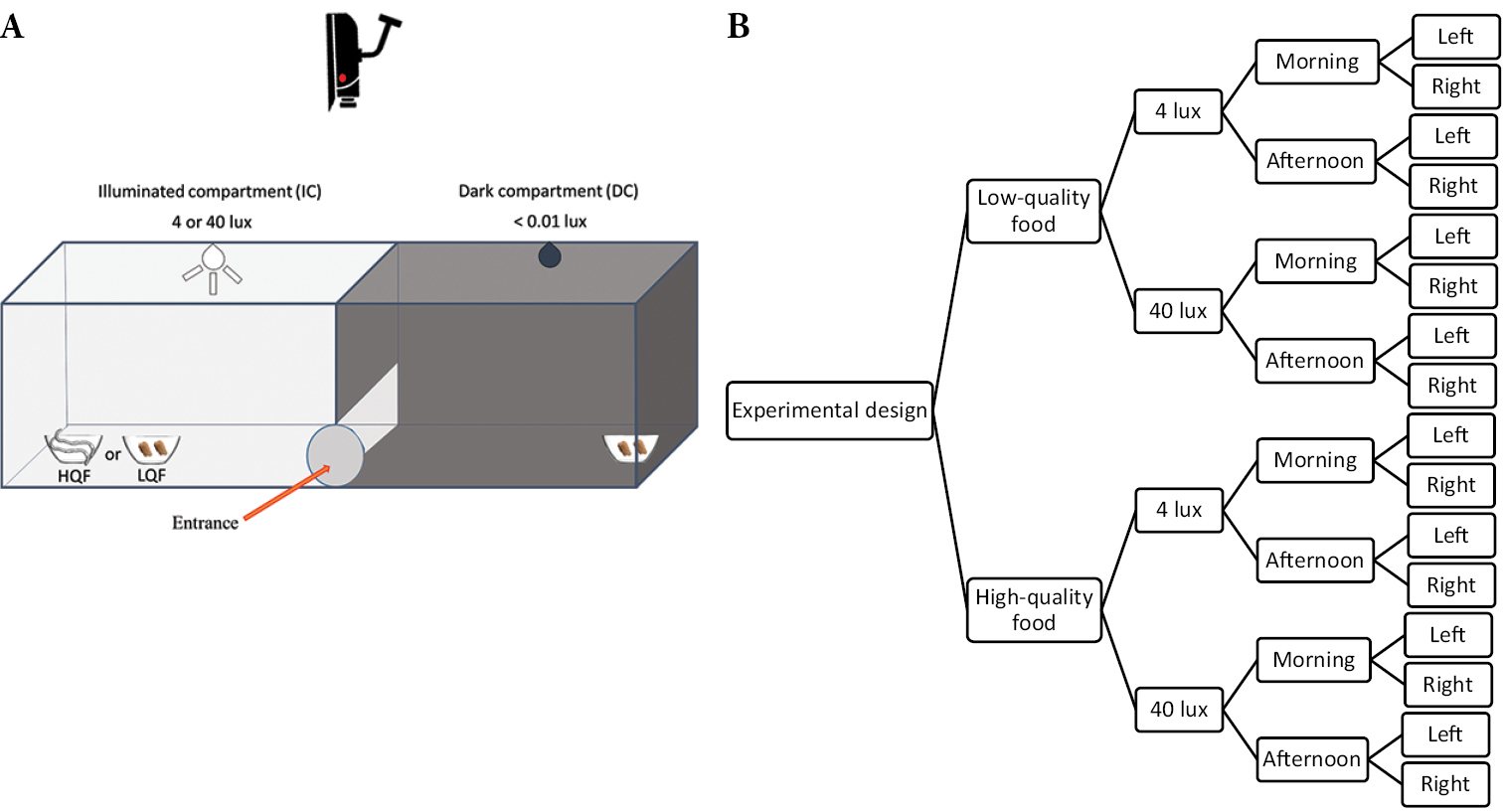
|
||
|
A Schematic representation of the test arena used for this experiment. Here, the left compartment is the Illuminated Compartment (IC). The source of light emitted was 4 or 40 lux. The right compartment is the Dark Compartment (DC) and contained an unlit amber LED. The two compartments are connected by an opening in the wall. Hamsters entered the arena through an opening (manually handled) located midway between the compartments. B Schematic representation of our experimental design. We performed 16 trials per individual hamster in a full-factorial design that included laterality (illuminated compartment on Left or Right of the test arena), time of the day (Morning or Afternoon), light intensity (4 lux or 40 lux) and food quality condition (HQF or LQF). We considered only the first trial for each light intensity and for each food quality condition. The four tests we are mentioning at the end of the paragraph were the ones used for the analysis, the others being conducted for checking the potential laterality and time of the day biases (but these trials were not used in the subsequent analyses). |